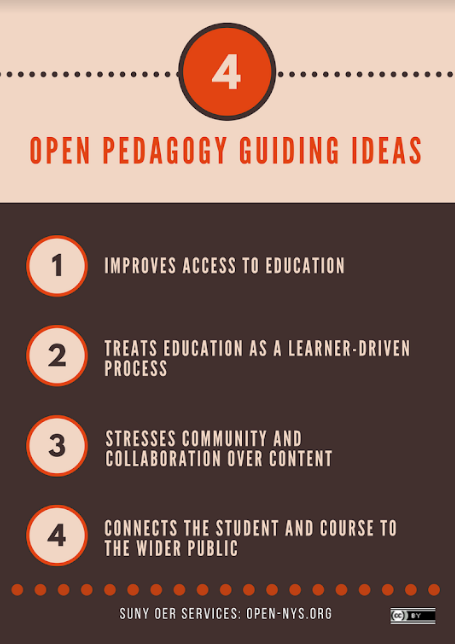OER defined
The William and Flora Hewlett Foundation provides the following definition of open educational resources:
“OER are teaching, learning, and research resources that reside in the public domain or have been released under an intellectual property license that permits their free use and re-purposing by others. Open educational resources include full courses, course materials, modules, textbooks, streaming videos, tests, software, and any other tools, materials, or techniques used to support access to knowledge.”
In other words, “OER” is a very broad term. We apply it towards anything that helps students master course concepts.
The key distinguishing factor is the copyright status of the material. If course content is copyrighted under traditional, all-rights-reserved copyright, then it’s not OER. If it resides in the public domain, or carries Creative Commons or similar open copyright status, then it is OER.
The 5 Rs of OER
A useful way to appreciate the value of OER is to understand what you, the user of openly licensed content, are allowed to do with it. These permissions are granted in advance, and are legally established through Public Domain or Creative Commons copyrights:
- Retain – the right to make, own, and control copies of the content (e.g., download, duplicate, store, and manage)
- Reuse – the right to use the content in a wide range of ways (e.g., in a class, in a study group, on a website, in a video)
- Revise – the right to adapt, adjust, modify, or alter the content itself (e.g., translate the content into another language)
- Remix – the right to combine the original or revised content with other material to create something new (e.g., incorporate the content into a mashup)
- Redistribute – the right to share copies of the original content, your revisions, or your remixes with others (e.g., give a copy of the content to a friend)
This material is adapted from original writing by David Wiley, which was published freely under a Creative Commons Attribution 4.0 license at http://opencontent.org/definition/ (Links to an external site.).
Examples of OER
Types of OER include (but are not limited to) syllabi, lesson plans, learning modules, lab experiments, simulations, course videos, discussion prompts, assignments, assessments, library guides, and course design templates.

